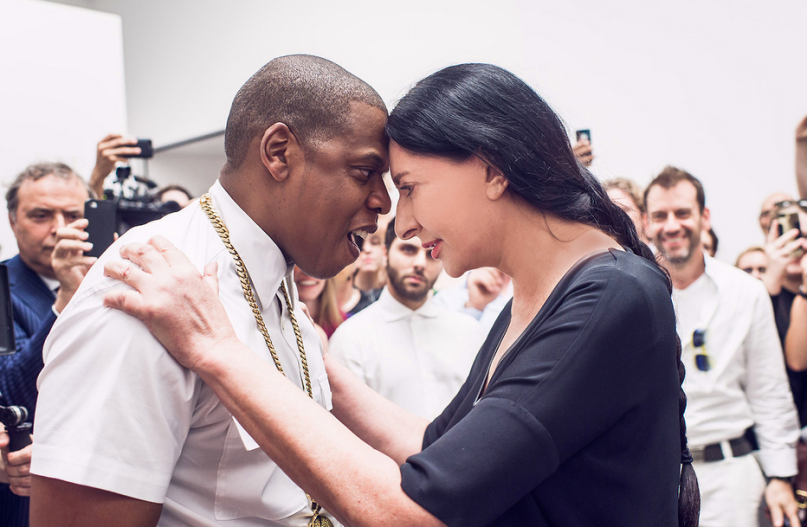
Photo via Consequence of Sound.
Narcissism is everywhere. News anchors say it prevents politicians from keeping their pants on. Teachers and coaches reinforce it by avoiding grades and giving out trophies that read “Participant.” Adults and kids push it on Facebook, Twitter and Instagram, while achievement-free celebrities turn it into worldwide exposure and profitable endorsements. Of course, it was only a matter of time until this blustery but debilitating epidemic struck an already self-absorbed art world.
And strike deep it has! Because artists in our time are defined simply as people who make art, they and those who covet their wares are especially susceptible to the narcissism bug. Take, for a start, American sociologist Howard Becker’s modern-day definition of an artist: “If you do it [art], you must be an artist; conversely, if you are an artist, what you do must be art.” That précis, of course, contains it’s own vain syllogism; some would say it’s downright self-aggrandizing. Consequently, just like Donald Trump—the one presidential candidate psychiatrists are willing to go out on limb to label clinically conceited—many artists today resemble textbook cases of narcissistic personality disorder (NPD).
According to the American Medical Association, narcissistic personality disorder is defined as “a condition in which a person is excessively preoccupied with personal adequacy, power, prestige and vanity, and mentally unable to see the destructive damage they are causing to themselves and others.” Consider, in this light, the late Chris Burden’s self mutilations, which included shooting himself in the arm and crucifying himself onto the hood of a car; Marina Abramovic’s recent entreaties to innocent bystanders in New York and London to queue for hours to share her “charismatic space”; and Shia LeBeouf’s latest grasp for undivided attention, #AllMyMovies, which consisted of a movie marathon complete with bizarro fans, rubbernecking press, and a half-asleep star munching on popcorn in one of the front rows. These and other fresh demonstrations of over-the-top egotism constitute a pandemic of art world narcissism that could, if left unchecked, turn into a serious mental health emergency.
If artists have long been predisposed to navel-gazing, experts tell us that the culture has lately upped the ante on looking for self-love in all the wrong places. According to Jean M. Twnege and W. Keith Campbell, authors of The Narcissism Epidemic: Living In the Age of Entitlement, studies indicate that the rise of social networking has measurably spiked incidences of narcissism while enabling the new spirit of selfishness to spread. Like the plague and typhoid, communicable NPD feasts upon the youngest and the weakest—in considerateness. That may be one reason why the derivative works of so many young painters—cue canvases by Lucien Smith, Oscar Murillo, Alex Israel, and Christian Rosa, among others—look so much like viral advertisements for their conformist selves.
Per Time magazine’s 2013 cover story on the “Me Me Me Generation,” here are a few basic facts: the National Institutes of Health reports that the incidence of NPD is three times as high for people in their 20s as for folks 65 or older; 58 percent more college students scored higher on a narcissism scale in 2009 than in 1982; 40 percent of millennials believe they should be promoted every two years, regardless of performance; and the obsession with fame among the young is apparently so superheated that three times as many girls 11 to 13 want to grow up to be a celebrity’s personal assistant instead of a US senator. (No numbers are available yet on how many tweeners would like to grow up to be Amy Cappellazzo’s Fonzworth Bentley, aka “the umbrella carrier”).
Elsewhere, psychologists have found statistically significant trends that show a steady increase in narcissism and hostility in popular music, as well as indications that individuals who score high on tests for “grandiose exhibitionism,” a common trait of NPD, not only tend to amass more friends on Facebook, they can easily be identified as narcissists by their Facebook pages.
Another simple conclusion to be be drawn from the data: real world Facebook and Twitter egotists set benchmarks for normal users of social media, just like their art world counterparts. Both misshape the wider cultural environment, but also open the floodgates to a more extreme scenario—the normalization of narcissism. Instagram, which, let’s face it, is largely a selfie-sharing app, is currently used to promote, sell and make art. In related news, several prominent writers have turned art criticism into a popularity contest with commentary measured in thumbs ups, red hearts and smiley-face emojis.
Here are a few other alarming examples of NPD that bear mentioning in this brief rundown of art’s narcissistic turn. Performance artist Mischa Badasyan is planning to have sex with one guy a day for a year to highlight how lonely apps like Grindr and Scruff make him feel. Twenty-six year old digital maven Molly Soda has been taking and posting naked selfies as an art form since she was sixteen, an act she considers “a super positive affirmation of self-love.” And, last but not least, painter Parker Ito—a self-described “prosumer,” or “a person who simultaneously produces and consumes culture”—recently took to coolhunting website the Creators Project to define Young Internet Based Artists (YIBA) as a generational cohort that is “ready and waiting” to become art’s “new hot commodity.”
In the same blog entry, Ito also wrote about wanting to purchase a video by web-artist Rafaël Rozendaal (who self-defines as an “everywhere-based visual artist”): “The narcissist in me saw something charming about owning that amount of internet real estate.”
Need I say more?